LITERS
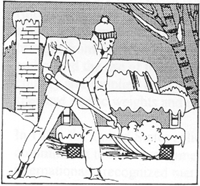
25 Degrees Fahrenheit
|
COMMON PREFIXES
(to be used with basic units)
milli: one-thousandth (0.001)
centi:one-hundredth (0.01)
kilo: one-thousand times (1000)
For example:
1000 millimeters = 1 meter
100 centimeters = 1 meter
1000 meters = 1 kilometer
|
1 LITER
|
 |
1 QUART
|
|

25 Degrees Celsius |
OTHER COMMONLY USED UNITS
millimeter: 0.001 meter - diameter of a paper clip wire
centimeter: 0.01 meter - a little more than the width of a paper clip (about 0.4 inch)
kilometer: 1000 meters - somewhat further than 1/2 mile (about 0.6 miles)
kilogram: 1000 grams - a little more than 2 pounds (about 2.2 pounds)
milliliter: 0.001 liter - five of them make a teaspoon
OTHER USEFUL UNITS
hectare: about 2 1/2 acres
metric ton: about one ton
|
|
|
A liter is a measurement of volume. It tells you how much liquid is inside a container.
1 liter = 1000 cubic centimeters
(That is a box that is 10 cm long, 10 cm wide, and 10 cm high.)
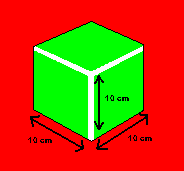
or
1 liter = 1 cubic decimeter
(That is a box that is 1 dm long, 1 dm wide, and 1 dm high.)
Here two most common metric measures used for liquids are:
LITER and MILLILITER
A milliliter is about how much liquid an eyedropper can hold.
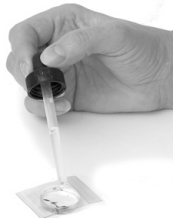 = 1 milliliter
= 1 milliliter
The best way to understand how much liquid a liter will hold
is to make a liter box yourself.
1. Create a template like this on construction paper in which each square is 10 cm x 10 cm).
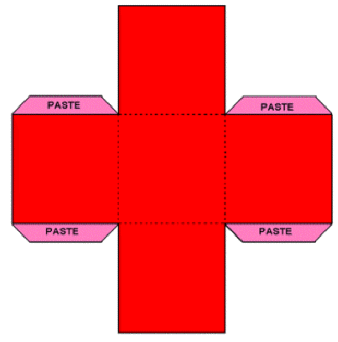
2. Cut on the solid lines.
3. Fold on the dotted lines and fold back the paste tabs.
4. Use glue and tape to hold the box together.
5. Put a plastic bag inside the box to use as a liner.
Your completed liter box should look something like this: 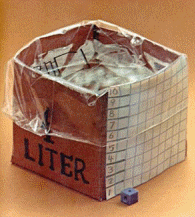
6. Experiment with different amounts of liquid to see how much 1 liter will hold.
Here are some containers I found in my kitchen.
Can you determine what the metric label on each one says?






 = 1 milliliter
= 1 milliliter
